|
|
جريدة رأس البر الطبية للنساء و الولادة
|
|
|
Rass El Barr Medical Journal Of Obestetrics & Gynecology
|
|
|
جريدة رأس البر الطبية للنساء و الولادة
|
|
|
Rass El Barr Medical Journal Of Obestetrics & Gynecology
|
Non-Periodic Electronic Journal
issued by the Departement Of Obestetrics &Gynecology
in Rass El Barr Central Hospital
It publishes recent articles in Gynecology and Obestetrics
collected from those published in obgyn sites , journals ,magazines
and recent news of obgyn in Dumiatt Governerate
Dr Muhammad Muhammad El Hennawy

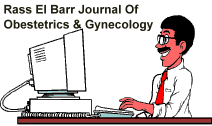


Volume 3
January 2007
Optimal timing of twin deliveries

Issue 18: 28 Aug 2006
Source: American Journal of Obstetrics & Gynecology 2006; 195: 172-7
The optimal date of delivery of twin pregnancies is likely to be 38 or 39 weeks’
gestation, as this is when morbidity and mortality rates tend to be lowest,
according to the findings of a new study.
Specialists from the University of Ottawa, Canada, conducted the study to
identify the most favorable gestational age (week) for the delivery of twin
pregnancies, in pregnancies of at least 37 weeks’ gestation.
In the introduction to their paper, in the American Journal of Obstetrics &
Gynecology, they write: “From the literature, there is controversy around the
optimum date of delivery for those twins who reach term: the optimum date has
been defined variably as either 37 or 38 weeks of gestation.”
To investigate further, they analyzed national data on 60,443 deliveries of twin
pairs at 37 or more weeks’ gestation. The pairs were delivered between 1995 and
1997.
The researchers stratified the deliveries into four groups based on gestational
age at delivery: 37 weeks, 38 weeks, 39 weeks, and 40 or more weeks.
Mortality:
For both of the twins in each pair, there was a significantly increased
incidence of total neonatal and noncongenital anomaly related deaths in those
born at 40 weeks or more of gestation, compared with the reference group of
twins born at 37 weeks. The relative risk of neonatal death was 3.47 for the
first twin delivered in each pair, and 2.52 for the second twin.
Morbidity:
For both twins, there was a significantly increased risk of neonatal morbidity,
as indicated by the Apgar score, in those born at 40 weeks or more of gestation,
compared with the reference group. The relative risk of having a low Apgar score
(below 3) at 5 minutes was 1.88 for the first twin, and 1.74 for the second
twin.
The association between gestational age at delivery and the requirement for
assisted ventilation was different for the different twins in each pair. First
twins born at 38 or 39 weeks’ gestation (but not those born at 40 or more weeks’
gestation) had a significantly decreased risk of requiring assisted ventilation,
compared with those born at 37 weeks’ gestation. The odds ratios were 0.86 at 38
weeks and 0.83 at 39 weeks.
In contrast, second twins born at 39 or 40 or more weeks’ gestation (but not
those born at 38 weeks’ gestation) had a significantly decreased risk of
assisted ventilation, compared with the reference group. The odds ratios were
0.83 and 0.81 respectively.
Concluding, the researchers state: “This study suggest that the optimal date of
delivery for twins should be <40 weeks of gestation, and we did not identify
compelling evidence (such as decreased risk of morbidity) for being delivered at
<38 weeks of gestation.”
They add that randomized trials are necessary, and note that one such trial (the
Twins: Timing of Birth at Term trial) is already underway in Australia.
Viral infections in pregnancy
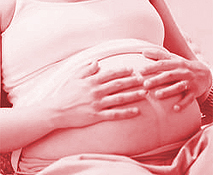
Issue 09: 24 Apr 2006
Source: Reproductive Toxicology 2006; 21: 446-57
The effects of specific viral infections during pregnancy, on the woman and on
the fetus, are summarized and discussed in a new review paper.
Researchers from the Israeli Ministry of Health in Jerusalem, Israel, reviewed
published evidence on viral infections that “have little in common except that
after infecting pregnant women they may cause fetal or neonatal damage.”
The authors continue: “Their overall risk to pregnancy outcome seems to be low,
and therefore their role as possible teratogens is often overlooked.”
The review paper includes more than 100 references, including case reports and
randomized, controlled studies. The viral infections reviewed are:
Poliomyelitis.
Japanese encephalitis.
West Nile virus.
Coxsackie virus.
Echovirus.
Measles.
Mumps.
Hepatitis viruses.
For each one, the authors discuss the effects of the viral infection on adults,
on the outcome of pregnancy, and on the fetus and neonate. Where appropriate,
they also discuss the effects of immunization.
For hepatitis B infection, for example, the authors conclude that there may be a
high rate of vertical transmission, especially in the third trimester. This can
cause fetal hepatitis that, if untreated, may become chronic.
They add that current evidence suggests that there “seems to be no increased
risk for major congenital anomalies in the children of women who are infected
with HBV [hepatitis B virus] during pregnancy.”
Maternal immunization against HBV in pregnancy, as well as immunoglobulin
injection, “seem to be safe to the fetus and apparently justified,” the authors
write.
The full paper is published in the latest issue of the journal Reproductive
Toxicology.
Spotlight on sexually transmitted infections

Issue 18: 28 Aug 2006
Source: Current Obstetrics & Gynaecology 2006; 16: 218-25
The clinical features, diagnosis and treatment of sexually transmitted
infections (STIs) are the subject of a new review paper for obstetricians and
gynecologists.
In the latest issue of the journal Current Obstetrics & Gynaecology, researchers
from Derby City General Hospital, UK, present an overview of STIs, intended for
obstetricians and gynecologists who “will often be patients’ first point of
contact.”
They add: “Special consideration of safe treatments and prevention of vertical
transmission in pregnant patients present obstetricians with extra challenges.”
In their paper, the authors devote sections to management of the following
infections, with reference to published management guidelines:
Chlamydia.
Gonorrhea.
Syphilis.
Genital herpes.
Anogenital warts.
HIV.
Hepatitis B and C.
The many facts, figures and recommendations presented in the paper include:
Chlamydia is the most common cause of sexually acquired reactive arthritis.
Gonorrhea is the second most common pathogen (after chlamydia) that causes
pelvic inflammatory disease and Fitz-Hugh-Curtis syndrome, with the accompanying
risk of long-term sequelae.
Vertical transmission of syphilis will occur in 70-100 percent of pregnancies.
Primary infection with herpes simplex virus is associated with a 41 percent
vertical transmission rate; secondary reactivation is associated with a 0-3
percent risk of neonatal infection.
It has been estimated that over half of the UK population will have a genital
HPV infection at some point in their life. Of these, about 20 percent will
develop warts.
The authors acknowledge that their sections on HIV and hepatitis B/C in
particular can only offer a brief overview, and that an exhaustive review of
management options is beyond the scope of the paper. Also, the treatment
regimens presented in the paper are those recommended in the UK – other regimens
may be recommended in other countries.
Testosterone and pre-eclampsia

Issue 12: 6 Jun 2006
Source: European Journal of Obstetrics & Gynecology and Reproductive Biology
2006; 126: 16-19
The results of a small study suggest that high levels of testosterone may be
involved in the pathophysiology of pre-eclampsia, and that research is warranted
into the potential role of anti-androgens in managing the condition.
Researchers from Aretaieio Hospital at the University of Athens, Greece,
measured androgen levels during the first half of the third trimester (between
28 and 34 weeks) of singleton pregnancies in 28 women with established
pre-eclampsia and in 25 normotensive women.
They measured levels of serum total and free testosterone,
dehydroepiandrosterone sulfate (DHEA-S), androstenedione, and sex hormone
binding globulin.
There were no significant differences between the two groups of women in terms
of maternal age, gestational age, body mass index, haematocrit, and sex of the
neonate. All of the women in the study were taking iron and multivitamin
supplements. None were taking antihypertensive or hormonal treatment, and there
was no history of hypertension, hyperandrogenism or polycystic ovarian syndrome.
Higher testosterone levels
The researchers report that the mean levels of total and free testosterone were
significantly higher in the pre-eclampsia group than in the control group:
Total testosterone: mean 154.4 ng/dL in the pre-eclampsia group, compared with
106.3 ng/dL in controls.
Free testosterone: mean 0.34 ng/dL in the pre-eclampsia group, compared with
0.21 ng/dL in controls.
Levels of DHEA-S, androstenedione, and sex hormone binding globulin were lower
in the pre-eclampsia group than among controls, but the differences were not
statistically significant.
In the discussion of their findings, the researchers say previous studies have
shown that placental aromatase enzyme catalyzes the aromatization of circulating
androgens into estrogens. During a normal pregnancy, androgen levels tend to
decrease, and estrogen levels increase, due to increased action of the enzyme.
The researchers write that the higher levels of testosterone seen in women with
pre-eclampsia “could possibly be explained by a deficient activity of placental
aromatase enzyme, which indicates a possible mechanism for its association with
pre-eclampsia.”
They conclude: “Elevated levels of circulating total testosterone and mainly
free testosterone secondary to inadequate catabolism by placenta aromatase could
be involved in the development and presentation of pre-eclampsia in the third
trimester of pregnancy.”
Complete versus incomplete placenta previa
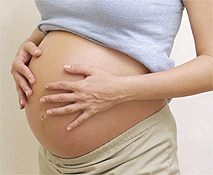
Issue 10: 8 May 2006
Source: International Journal of Gynecology & Obstetrics 2006; 93: 110-7
Women with complete placenta previa (PP) tend to have worse obstetric outcomes
than women with incomplete PP, according to the results of a new study.
Specialists at the Medical University of Zagreb, Croatia, performed a
retrospective case-control study of all singleton pregnancies at the city’s
Women’s Hospital between 1992 and 2001. Their aim was to investigate risk
factors for, and maternal and neonatal outcomes of, the different types of PP.
The diagnosis and location of PP was determined by reference to transabdominal
and transvaginal ultrasonographic images, and the results of the last
ultrasonographic examination before delivery (this allowed exclusion of cases of
PP that resolved spontaneously during pregnancy).
Complete PP was defined as cases where the placenta totally covered the internal
cervical os at the time of delivery. Incomplete PP included marginal placenta
previa (the placenta was at the margin of the cervical os) and partial placenta
previa (the placenta partially covered the cervical os).
A high-risk subgroup
In the latest issue of the International Journal of Gynecology & Obstetrics, the
researchers report that placenta previa occurred in 202 of the 53,042 deliveries
studied, an incidence of 0.4 percent (or 1 in 250).
Of these 202 cases, one-third (66 cases) were complete PP, and two-thirds (136
cases) were incomplete PP.
Comparing the complete and incomplete PP groups, the researchers write that:
There were no significant differences in location (anterior vs posterior), and
in the frequency of emergency/elective cesarean section.
There was no significant difference in rates of antepartum hemorrhage, although
women with complete PP tended to start bleeding at a significantly earlier
median gestational week.
Women with complete PP had a significantly higher requirement for antepartum and
postpartum transfusions, and significantly higher rates of postpartum hemorrhage
and postpartum hysterectomy.
Women with complete PP were more than three times more likely to develop
placenta accreta, after controlling for confounding factors.
There were no significant differences in the incidence of preterm delivery.
Term infants of mothers with complete PP had a significantly lower birth weight
than those of mothers with incomplete PP.
The researchers conclude that complete PP is a high-risk subgroup of PP
associated with higher maternal morbidity, compared with incomplete PP.
Concluding, they write: “In this study, women with complete PP had a higher
incidence of placenta accreta and consequently had higher rates of [postpartum
hemorrhage] and hysterectomy, and required a higher frequency and higher amount
of postpartum blood transfusion. Knowing this can help medical staff to prepare
adequately for the postnatal course of PP.”
|
February 2007
2-in-1 approach to prolapse surgery prevents incontinence
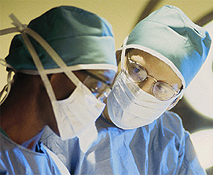
Issue 09: 24 Apr 2006
Source: New England Journal of Medicine 2006; 354: 1557-66
The incidence of stress urinary incontinence following surgery for pelvic
organ prolapse in women can almost be halved by performing Burch
colposuspension at the same time as abdominal sacrocolpopexy, according to
new findings.
Researchers from centers across the USA recruited 322 women who were due to
undergo sacrocolpopexy to treat prolapse and who did not report already
having symptoms of stress incontinence.
Of these women, 157 were randomly assigned to undergo concomitant Burch
colposuspension, and 165 were allocated to the control group of no Burch
colposuspension.
Three months after surgery, at blinded evaluations, 23.8 percent of the
sacrocolpopexy plus Burch colposuspension group and 44.1 percent of the
controls were found to meet one of more of the criteria for stress
incontinence, according to the Pelvic Floor Distress Inventory (PFDI)
questionnaire and the results of stress testing. This was a statistically
significant difference.
In addition, women in the combined surgery group were significantly less
likely than women in the control group to report “bothersome” symptoms of
stress incontinence, based on responses to the PFDI questionnaire (6.1
percent versus 24.5 percent, respectively).
There was no significant difference between the two groups in rates of urge
incontinence (32.7 percent in the combined surgery group and 38.4 percent in
the control group).
"An important advance"
The researchers, writing in the New England Journal of Medicine, conclude:
“In women without stress incontinence who are undergoing abdominal
sacrocolpopexy for prolapse, Burch colposuspension significantly reduced
postoperative symptoms of stress incontinence without increasing other lower
urinary tract symptoms.”
They say further work is needed to determine whether the benefits of the
combined surgery approach persist beyond 3 months, and whether they apply to
other prolapse and continence procedures.
Dr Duane Alexander, the director of the USA’s National Institute of Child
Health and Human Development, which helped fund the study, said: “This is an
important advance in treatment for a large number of women. More than
200,000 women have prolapse surgery every year [in the USA], and these
research findings could prevent incontinence in many of them.”
Prenatal diagnosis miscarriage risk overestimated
Source: Obstetrics & Gynecology 2006; Not yet available online
Assessing how miscarriage rates after chorionic villus sampling and
amniocentesis changed between 1983 and 2003.
The risk of miscarriage after prenatal diagnostic tests is lower than
previously thought, and may be no higher after chorionic villus sampling
(CVS) than amniocentesis, research suggests.
The results are based on data for 9886 CVS procedures and 30,983
amniocentesis procedures performed at The University of California at San
Diego Medical Center between 1983 and 2003.
Testing with CVS, which can be performed earlier in gestation than
amniocentesis, has typically been thought to bring a higher risk of
miscarriage.
This trend was maintained, overall, in the current study, which showed that
the rate of pregnancy loss for women undergoing CVS (3.12 percent) was
higher than that for those undergoing amniocentesis (0.83 percent), report
the researchers led by Aaron Caughey (University of California at San
Francisco, USA).
However, when the data were examined at 5-year intervals, loss rates for
both procedures fell over time and the difference between the two procedures
decreased.
After controlling for gestational age and maternal age, losses from CVS and
amniocentesis were equivalent.
"If there is no difference in risk associated with CVS and amniocentesis,
women are more likely to choose CVS because information can be provided much
sooner," said study co-author Mary Norton.
Norton notes that a possible reason for the reduction in miscarriage after
CVS is that practitioners have improved. Given this and the fact the results
were obtained from a single center, the researchers warn that the findings
may not be applicable to all institutions.
Prevention of preterm births
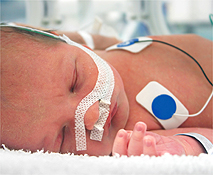
Issue 16: 31 Jul 2006
Source: US Institute of Medicine report Preterm Birth: Causes, Consequences,
and Prevention
A multidisciplinary research effort is needed in order to provide a better
understanding of preterm births and how to prevent them, a new report has
concluded.
The report, Preterm Birth: Causes, Consequences, and Prevention, was
produced by a committee of specialists convened by the US Institute of
Medicine, and a summary is available from the website http://www.iom.edu/.
The report is in part a response to a steadily rising incidence of preterm
births, which are defined as births occurring before 37 weeks’ gestation. In
the USA, the proportion of live births that are preterm has risen from 10.6
percent in 1990 to 12.5 percent in 2004.
The highest rates are among African-American women (17.8 percent in 2003),
and the lowest rates are among Asian or Pacific Islander women (10.5 percent
and 11.5 percent respectively in 2003). According to the new report,
differences in socioeconomic conditions and maternal behaviors cannot fully
account for these differences.
A research agenda
The report includes a proposed agenda for future research. It says a
multidisciplinary approach will be needed, to take into account the
inter-related biological, psychological, social and environmental factors
involved in preterm birth. Multidisciplinary research centers should be
established by public and private research centers, the report suggests.
It recommends that researchers focus on:
“Better defining the problem of preterm birth, including the use of
ultrasound in the first trimester to accurately establish gestational age.”
“Conduct[ing] studies to improve the clinical treatment of women who deliver
preterm and infants born preterm, and the health care systems that care for
them.”
“Examin[ing] the multiple causes of preterm birth, including investigating
reasons for disparities among different racial, ethnic, and socioeconomic
groups.”
“Conducting studies that will help increase our understanding of the impact
of preterm birth on various public programs and policies, and how policies
can be used to reduce the rates of preterm birth.”
Progress in the understanding and prevention of preterm births “requires
acknowledgement that it is not one disease with a single solution or cure,
but rather the product of overlapping factors,” the report states.
Dr Richard Behrman, chairman of the Institute of Medicine committee that
produced the report (the Committee on Understanding Premature Birth and
Assuring Healthy Outcomes) said: “Despite great strides in improving the
survival of infants born preterm, little is known about how preterm births
can be prevented. Any significant gains to be made in the study of preterm
birth will be made in the area of prevention.”
It also recommends that further efforts are made to reduce the number of
multiple births (a risk factor for preterm birth) that results from
infertility treatment.
Pregnancy in older women

Issue 12: 6 Jun 2006
Source: European Journal of Obstetrics & Gynecology and Reproductive Biology
2006; 126: 33-8
“Advanced maternal age of 40 years and over was not associated with adverse
maternal and perinatal outcome, although the incidence of cesarean section
was significantly increased in these women,” specialists have concluded
after conducting a retrospective review of records.
The researchers from centers in Safat, Kuwait, reviewed data on all 168
women aged 40 years or over (mean age 41.5 years) who delivered singleton
pregnancies at the Safat Maternity Hospital during a 30-month period. A
control group consisted of 160 women aged 25-30 years.
Writing in the latest issue of the European Journal of Obstetrics &
Gynecology and Reproductive Biology, the researchers report that the older
women has a significantly higher mean parity, of 4.24 compared with 1.69 in
the control group.
A past history of cesarean section was also significantly more prevalent
among the older women (24.4 percent) than among the control group (11.9
percent).
Most of the pregnancies in each group were spontaneous. Among the older
women, 4 percent of the pregnancies were initiated by assisted reproductive
technology.
Older vs younger women
The researchers observed a significantly higher overall incidence of
antenatal complications in the study group (57.1 percent) than in the
control group (12.5 percent). Complications that were significantly more
common in the study group were diabetes mellitus, essential hypertension,
pregnancy-induced hypertension, and premature rupture of membranes. These
contributed to a significantly higher rate of induction of labor in the
study group (24.4 percent compared with 11.9 percent among controls).
Significantly more women in the study group underwent a cesarean section: 31
percent compared with 16.3 percent of the control group. In addition, the
mean gestational age at delivery was significantly lower among the older
women: 38.06 weeks compared with 39.31 weeks in the control group.
The mean birth weights were similar in each group, although the proportion
of infants who were 2500 g or less was significantly higher among the older
women (10.7 percent of births) than the control group of younger women (3.8
percent of births).
The researchers report that the overall perinatal outcomes of the study and
control groups were “comparable and quite satisfactory.” They also say that
no significant adverse intrapartum or postpartum maternal morbidity was
observed, and no maternal mortality was reported.
Discussing their findings, the researchers say several factors help explain
the satisfactory overall maternal and perinatal outcome in the women aged 40
or over. These include “the fact that we have well-equipped medical
facilities, high-quality obstetric personnel and a policy of early
intervention, low incidence of antenatal, intrapartum and postpartum
complications in the study population, and generally a healthy patient
population who tend to be of higher socio-economic status.”
On a related subject, see the article Maternal age and stillbirths, from the
ORGYN Online Magazine issue of 27 March 2006. This discusses research
showing that women at the extremes of maternal reproductive age (younger
than 20 years or older than 34 years) were more likely than women of
intermediate age to have a stillbirth.
Understanding PCOS

Issue 15: 17 Jul 2006
Source: Best Practice & Research Clinical Endocrinology & Metabolism 2006;
20: 193-205
A new review paper has addressed the current state of knowledge of the
diagnosis, epidemiology, and genetics of polycystic ovary syndrome (PCOS).
In the latest issue of the journal Best Practice & Research Clinical
Endocrinology & Metabolism, specialists from centers in Los Angeles, USA,
provide a detailed review of published evidence. In particular, they note
the controversy that exists in defining, and therefore diagnosing, PCOS.
Their findings are summarized at the end of the paper in a list of four
“practice points”. These state:
“PCOS is a diagnosis of exclusion, such that other androgen excess or
ovulatory disorders with clearly defined etiologies are to be excluded.”
“To date, two major diagnostic criteria have been proposed.” The NIH 1990
criteria define PCOS as biochemical and/or clinical hyperandrogenism and
ovulatory dysfunction, after excluding related or other disorders. The
Rotterdam 2003 criteria define PCOS as present if two of the following three
criteria are met, after excluding related or other disorders: biochemical
and/or clinical hyperandrogenism, ovulatory dysfunction, and polycystic
ovaries.
“Whether the two new phenotypes proposed by the Rotterdam 2003 criteria
[women with polycystic ovaries and ovulatory dysfunction but no
hyperandrogenism, and women with polycystic ovaries and hyperandrogenism but
no ovulatory dysfunction] actually represent PCOS and/or have similar
long-term morbidities remains to be determined, and a delay in the adoption
of these criteria is recommended.”
“Consequently, the prevalence of clinically evidence PCOS in unselected
women of reproductive age, using the 1990 NIH criteria, ranges from 6.5 to
8.0%; it may be higher if more expansive diagnostic criteria are used.”
The authors also suggest a research agenda to address unanswered questions
about PCOS. This includes a call for cross-sectional and longitudinal
studies to investigate the two new phenotypes proposed by the Rotterdam 2003
criteria, plus studies of ethnic differences in the prevalence of PCOS, and
of molecular and genetic factors involved in PCOS.
Preventing further miscarriages

Issue 17: 14 Aug 2006
Source: Fertility and Sterility 2006; 86: 362-6
Women with unexplained recurrent miscarriages and without thrombophilia
could benefit from thromboprophylaxis in future pregnancies, new research
suggests.
Researchers from centers in Israel performed a prospective randomized study
of the effect of thromboprophylaxis, with enoxaparin or aspirin, on
pregnancy outcomes in 104 women with previous unexplained consecutive
recurrent miscarriages (three or more in the first trimester, or at least
two second-trimester fetal losses).
Women with thrombophilia, anatomical abnormalities, or intrauterine
adhesions, were among those excluded from the study.
The women were randomized to take 40 mg enoxaparin (54 women) or 100 mg
aspirin daily (50 women) from the time of detection of a fetal heart beat,
at 6-12 weeks’ gestation, until the end of the pregnancy.
Births and complications
Reporting their findings in the journal Fertility and Sterility, the
researchers say there was no significant difference between groups in the
live birth rate: 81.5 percent (44/54 women) in the enoxaparin group and 84
percent (42/50 women) in the aspirin group.
Among the subgroup of women the researchers called primary aborters (all
previous pregnancies has terminated as miscarriages), live births occurred
in 17 of the 18 (94 percent) in the enoxaparin group, and 18 of the 22 (81
percent) in the aspirin group.
Preterm delivery rates, placental Doppler blood flow, Apgar scores, and mean
birthweights were similar in both groups.
Discussing their findings, the researchers note some limitations of their
study, including the lack of a placebo control group. They add that the
reason for including enoxaparin in the study was because, like aspirin, it
has anti-inflammatory effects as well as anticoagulant effects.
Concluding, the researchers write: “Both regimens were associated with a
high live-birth rate and few late-pregnancy complications.” They add: “In
view of the minimal risks of enoxaparin and aspirin to the mother and fetus,
either form of treatment should be considered in women after three or more
pregnancy losses.”
In 2003, the UK’s Royal College of Obstetricians and Gynaecologists (RCOG)
issued evidence-based recommendations for managing couples with recurrent
miscarriage. For an overview of the advice, see the ORGYN Online Magazine
article Tackling recurrent miscarriage
March 2007
Obesity and infertility

Issue 15: 17 Jul 2006
Source: Maturitas 2006; 54: 363-71
The negative effects of obesity on fertility, in women and in men, are
examined in detail in a new review paper.
The author, Professor Renato Pasquali from the Endocrinology Unit at the
University of Bologna, Italy, concludes that these adverse effects “appear
to be mainly related to disorders of sex hormone secretion and/or
metabolism, leading in turn to a condition of relative hyperandrogenism in
obese women and of hypotestosteronemia (and, in some cases, a true
hypogonadotropic hypogonadism) in obese men.”
The author discusses reproductive disorders in obese women under a series of
headings: epidemiological aspects and age-related factors; obesity and
polycystic ovary syndrome (PCOS); drug-induced ovulation, miscarriages and
pregnancy rates; assisted reproductive technology and obesity; and
mechanistic factors of infertility in obesity.
The adverse effects of obesity on fertility on obese women are summarized
as:
Precocious menarche.
Menstrual alterations (oligo-amenorrhea).
Chronic oligo- or anovulation.
Relative hyperandrogenic state.
Pathophysiological implication in polycystic ovary syndrome (PCOS).
Increased risk of [spontaneous] abortion.
Reduced rates of pregnancy after assisted reproductive technology.
Increased risk of morbidity in obese pregnant women.
Preterm deliveries and increased fetal morbidity and mortality.
The author notes that the impact of obesity on fertility has not been
investigated as much in men as it has in women. Clinical data, however,
“support the concept that fertility problems are not uncommon in the
presence of obesity, particularly grade 3”, in men, he writes.
The potential negative effects of obesity on fertility in men are summarized
as: hypotestosteronemia; hypogonadotropic hypogonadism (in massive obesity);
erectile dysfunction; and reduced spermatogenesis (although this is rare).
The author also notes that published research has shown that weight loss can
improve hormonal abnormalities and fertility rates in both women and men.
The full review paper is published in the latest issue of the journal
Maturitas. To read other ORGYN Online Magazine articles related to this
topic, see Advice on obesity and pregnancy (from the 19 September 2005
issue) and BMI and pregnancy outcomes (from the 16 June 2003 issue).
Menstrual cycle length before the menopause

Issue 18: 28 Aug 2006
Source: Fertility and Sterility 2006; in press (currently available at
http://www.sciencedirect.com/)
In a new paper researchers have challenged landmark findings on the lengths
of perimenopausal menstrual cycles.
A 1967 paper by Treloar et al, published in the International Journal of
Fertility, estimated that between the age of 20 years and early
perimenopause, the mean length of menstrual cycles fell from 30 to just
under 27 days.
In the 4 years immediately before menopause, the mean cycle length increased
to 57 days. These findings are cited widely in medical textbooks and in
studies of reproductive aging.
But in a new paper to be published in the journal Fertility and Sterility,
researchers from centers in Washington, Princeton and Seattle, USA, describe
how these estimates were distorted by bias. They then present their own
analysis, excluding these biases, of the prospectively collected menstrual
cycle data that were used in the 1967 paper.
They report large differences between the original analysis and new analysis
in the estimated mean menstrual cycle length for each of the 4 years before
menopause:
4th year before menopause: mean menstrual cycle length is 33.60 days in the
original analysis, 30.48 days in the new analysis.
3rd year before menopause: 43.91 days in the original analysis, 35.02 days
in the new analysis.
2nd year before menopause: 55.87 days in the original analysis, 45.15 days
in the new analysis.
1st year before menopause: 54.58 days in the original analysis, 80.22 days
in the new analysis.
In the year before menopause, more than half of the women were spending at
least 75 percent of that year in menstrual cycles of more than 40 days.
The researchers write that, in their reanalysis, “the increase in mean cycle
length as a woman approached menopause began to occur closer to menopause
than previously thought, but the extent to which a woman’s cycles lengthened
as she approached menopause was actually greater than previously thought.”
In the paper they discuss in depth the implications of the new findings for
clinical practice and for research.
This discussion includes the suggestion of monitoring time spent in cycles
of more than 40 days: “The percentage of a year that a woman spends in
>40-day cycles is a multiple-event measure that women could record and share
with their physicians.” This could be useful in informing management
decisions, they state. “It may be consequential in determining the time
until onset of menopause, often a critical determinant in choosing between
hormonal therapy and surgical (hysterectomy) options for a patient with
perimenopausal menorrhagia.”
Predicting the timing of menopause (part 2)

Issue 09: 24 Apr 2006
Source: European Journal of Obstetrics & Gynecology and Reproductive Biology
2006; 125: 221-5
A newly published study has added to current knowledge of the factors that
may affect the timing of natural menopause.
Publication of the new study, in the latest issue of the European Journal of
Obstetrics & Gynecology and Reproductive Biology, follows another recent
paper on the same subject.
Earlier this year, researchers in Vienna, Austria, reported their
development and testing of a formula for predicting age at natural
menopause, based on personal medical history and the findings of genetic
tests. The formula used five variables:
The number of full-term pregnancies.
The presence of at least one mutant allele of the gene CYP17.
A personal history of breast surgery.
The presence of at least one mutant allele of the gene CYP1B1-4.
Body mass index.
For more on this, see the article Predicting the timing of menopause, from
the ORGYN Online Magazine issue dated 13 February 2006.
The new study, involving some of the same researchers from Vienna,
investigated the effect of lifestyle parameters, personal history, and a
common polymorphism called SRD5A2 (involved in androgen metabolism) on the
timing of natural menopause in 323 postmenopausal Caucasian women.
Of these women, about half carried the mutant allele (either homozygously or
heterozygously).
Only one significant association
After analysing the data collected from the 353 women, the researchers found
that the only factor significantly associated with the timing of menopause
was the number of full-term pregnancies: the more full-term pregnancies, the
later the natural menopause. The average age at natural menopause was 48.3
years in women with no full-term pregnancies, and 49.6 years in women with a
history of two or more.
The researchers suggest that, because ovulation is suppressed during and
shortly after pregnancy, oocyte depletion is delayed in parous women,
pushing the timing of menopause to a later date.
Other factors studied, including the presence of the SRD5A2 polymorphism,
smoking, body mass index, and a history of breast cancer, were not found to
have any association with age at natural menopause. The researchers comment
that the apparent lack of effect of the SRD5A2 polymorphism was
“surprising”, but add that its possible associations with menopause timing
needs to be studied in other populations also
Women prefer examinations without stirrups

Issue 16: 31 Jul 2006
Source: British Medical Journal 2006; 333: 171-3 & 173-4
Women undergoing a speculum examination feel less vulnerable and more
comfortable when stirrups are not used, according to new study findings.
Researchers from centers in Augusta and Fort Gordon, in Georgia, USA,
randomized 197 women undergoing speculum examination as part of a routine
gynecological examination into two groups: “stirrup” and “non-stirrup”.
Women in the stirrup group were examined with their heels placed in
uncovered metal stirrups at 30-45 degree angles to the examination table. In
the non-stirrup group, women were examined with their feet placed on the
corners of a fully deployed table extension.
Afterwards, the women completed questionnaires about their perceived level
of physical discomfort, their sense of vulnerability, and their sense of
control during the examination. Visual analogue scales were used in order to
provide quantitative measures.
Reporting their findings in the British Medical Journal, the researchers say
the women in the non-stirrup group felt significantly less vulnerable and
more comfortable than women in the stirrup group. The mean sense of
vulnerability was 23.6 in the stirrup group, but only 13.1 in the
non-stirrup group (a reduction of 44 percent). The mean level of physical
discomfort was 30.4 in the stirrup group, but only 17.2 in the non-stirrup
group (a reduction of 43 percent).
There was no significant difference between groups in terms of the sense of
control. In addition, there was no difference between groups in the quality
of smears.
The researchers conclude: “Women should be able to have gynaecological
examinations without using stirrups, to reduce the stress associated with
speculum examinations.”
Commentary and recommendations
In a commentary article on the paper, UK-based authors suggest that the
study’s findings should change practice in the USA. They note that, in the
UK, most speculum examinations for routine cervical smears are performed in
general practice or family planning clinics, and stirrups tend not to be
used.
They also refer to guidelines on conducting vaginal examinations, published
by the UK’s Royal College of Obstetricians and Gynaecologists in 2002. These
include:
“Explain the reason for doing a vaginal examination and obtain verbal
consent.”
“Offer to find a chaperone and record this in the notes.”
“Provide privacy to undress and use drapes to maintain the patient’s
dignity.”
“Use a closed room and avoid interruptions during the examination.”
“During the examination: be gentle, explain what you are doing, be alert to
indications of distress, avoid personal comments.”
Scale evaluates self-efficacy in infertility
Issue 13: 19 Jun 2006
Source: Fertility and Sterility 2006; 85: 1684-96
Researchers have reported the development and validation of a rating scale
to assess self-efficacy among infertile patients. The Infertility
Self-Efficacy (ISE) scale “appears to be a reliable and valid measure of an
individual’s self-confidence in areas related to health promotion during
infertility treatment,” they conclude.
Writing in the journal Fertility and Sterility, the researchers from centers
in Connecticut and Massachusetts, USA, note that other measures of mental
health used in infertility tend to be either distress-focused (such as the
Beck Depression Inventory) or problem-focused (such as the Ways of Coping
questionnaire, Fertility Problem Inventory, and Infertility Questionnaire).
In contrast, the ISE scale focuses on a person’s perceived ability and
confidence to engage in particular health promoting activities or behaviors.
The researchers provide an example, noting that an infertile woman may have
high self-efficacy initially, and perceive herself to have the confidence
and skills needed to perform treatment tasks such as self-injection.
However, after multiple pregnancy losses or failed treatment cycles, her
perceived self-efficacy may be poorer, at which point psychological
intervention could be helpful.
In the new paper, the researchers report in detail how they developed,
tested, refined and validated the ISE scale. This process involved the
recruitment of 213 people (159 women and 54 men) diagnosed with infertility
in the past 2 years.
The final, validated ISE consists of 16 items, including the following:
“Ignore or push away unpleasant thoughts that can upset me during medical
procedures”
“Keep a sense of humor”
“Make meaning out of my infertility experience”
“Handle mood swings caused by hormonal treatments”
“Keep from being discouraged when nothing I do seems to make a difference”
“Accept that my best efforts may not change my/our infertility”
“Control negative feelings about infertility”
“Cope with pregnant friends and family members”.
The researchers note that there were sex differences, in that men tended to
have significantly higher self-efficacy scores on the ISE, compared with
women. However, they note that the study sample was biased towards women,
and that further work is needed on use of the ISE in men.
After an extensive discussion of their overall findings, they conclude:
“Assessing an infertility patient’s self-efficacy with the ISE may be useful
in clinical research and as a counseling tool to help guide patients in
actively managing their fertility treatment.”
Promoting the obstetrics evidence base

Issue 17: 14 Aug 2006
Source: International Journal of Gynecology & Obstetrics 2006; 94: 179-84
Obstetric interventions and devices that have the support of a good evidence
base but are not universally applied are the subject of a new paper.
The authors, from the United Nations Population Fund (UNFPA) in Geneva,
Switzerland, and Addis-Ababa, Ethiopia, say the limited use of certain
evidence-based obstetric practices is a major obstacle to the improvement of
care.
In their paper in the International Journal of Gynecology & Obstetrics, they
list the key evidence-based interventions, with supporting references. They
note that the list is not exhaustive and “is limited to obstetric
interventions during the very end of pregnancy, labor, and the immediate
post-partum period, that can be performed for the most part by a skilled
attendant.”
The list, presented under several main headings, includes the following
(each intervention is discussed in more detail in the full paper):
Preventing and managing postpartum hemorrhage: active management of the
third stage of labor, use of oxytocin, use of pre-filled syringes.
Controlling hypertensive disorders of pregnancy: use of magnesium sulfate.
Addressing prolonged/obstructed labor: use of WHO partograph, vacuum
extraction, cesarean section under regional anesthesia with antibiotic
prophylaxis, symphysiotomy, external cephalic version after 37 weeks of
gestation.
Controlling infection: antibiotic prophylaxis, antibiotic treatment,
prevention of mother-to-child transmission of HIV, syphilis screening and
treatment.
Integrating newborn care: routine induction of labor after 41 weeks, care of
the newborn with asphyxia, skin-to-skin method (kangaroo method).
For each of these categories, the authors also discuss promising
interventions, practices and devices that have not yet been subjected to
multicenter trials or Cochrane reviews.
In their discussion, the authors say wider utilization of the evidence-based
interventions may require the revision of national guidelines and
regulations. They add that the providers of such interventions should also
be given protections against liability.
For more information on evidence-based obstetrics, the authors suggest
readers visit the WHO Reproductive Health Library at
http://www.rhlibrary.com/. An online or CD-ROM subscription is free to
visitors in countries on the UN list of less-developed countries
Embryo transfer: day 2 or day 3?

Issue 18: 28 Aug 2006
Source: Fertility and Sterility 2006; 86: 44-50
Embryo transfer on day 2, rather than day 3, leads to improved clinical
outcomes in women under 40 who have a low number of embryos to transfer, the
results of a new study suggest.
Delaying embryo transfer to day 3 (in order to optimize embryo selection by
observing the initial transition to embryonic gene expression control) is
well accepted. But specialists at the University of California, in San
Francisco, USA, wanted to determine whether culturing embryos for 1 day less
was of any benefit in the subgroup of IVF patients who do not have a
sufficient number of embryos available for selection (and in whom all
embryos will usually be transferred, irrespective of quality).
In a paper in the journal Fertility and Sterility, they present their study
of 242 fresh IVF/ICSI cycles where all generated embryos were transferred
because of their extremely low number.
The original decisions to transfer all embryos were based on patient
prognosis (taking into account age, FSH, and prior failed attempts) and the
number of embryos available, according to defined criteria (described in
detail in the full paper).
The researchers divided the patients into two groups according to age: under
40 years of age, and 40 or over.
In the patients under 40, embryo transfer was performed on day 2 in 65
cycles, and day 3 in 70 cycles. In patients aged 40 or over, embryo transfer
was performed on day 2 in 53 cycles, and day 3 in 54 cycles.
In the women under 40, day 2 embryo transfer was associated with
significantly improved outcomes compared with day 3 transfer.
More ongoing pregnancies:
After adjusting for confounding factors, women under 40 who had embryo
transfer on day 2 were 2.28 times as likely (95 percent confidence interval
1.03-5.04) than those who had embryo transfer on day 3 to have an ongoing
pregnancy (defined as those that progressed beyond the first trimester with
cardiac activity, or that delivered).
In the day 2 group, there were 30 ongoing pregnancies from 65 cycles. This
compared with 20 ongoing pregnancies from 70 cycles in the day 3 group.
Fewer miscarriages:
In addition, women under 40 who had embryo transfer on day 2 were 0.04 times
as likely (95 percent confidence interval 0.00-0.54) than those who had
embryo transfer on day 3 to have a spontaneous miscarriage. In other words,
the odds of a day 2 embryo transfer ending in miscarriage were only 4
percent of those when transferred on day 3.
In the day 2 group, there were two miscarriages from 65 cycles. In the day 3
group, there were nine miscarriages from 70 cycles.
In the group of older women, aged 40 or over, the day of embryo transfer had
no significant effect on outcomes.
No advantage to additional day
At the end of their paper, the researchers write: “In conclusion, in cases
where there are low numbers of embryos available for transfer, a day 2 ET
[embryo transfer] may achieve better clinical outcomes in younger patients
(<40 years old), as demonstrated by a significant reduction in miscarriages
and improved ongoing pregnancy rates.
“Therefore, there appears to be no advantage to culturing an additional day
in this subgroup of patients.”
The researchers add that the results of their study need to be confirmed in
further randomized studies.
April 2007
Study assesses short-term diet before IVF
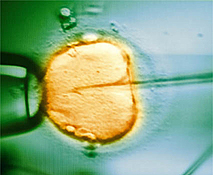
Issue 16: 31 Jul 2006
Source: Fertility and Sterility 2006; 86: 227-9
A short-term effort by overweight or obese women to lose weight before IVF
treatment, by adopting a very low calorie diet (VLCD), has no apparent
benefit, the results of a pilot study suggest.
Specialists from the University of Adelaide, Australia, conducted a small
study to investigate the effects on IVF outcomes of overweight/obese women
adopting a VLCD for a short period before and during treatment.
Almost one in three women attending IVF clinics in Australia is overweight
or obese.
The researchers recruited 10 overweight or obese women (a body mass index of
28 kg/m2 or more) who had tried to conceive in the previous 3-5 years by
having fertility treatments. Four of the women dropped out during the study.
The remaining six completed 27-41 days of dietary intervention with a
commercially available VLCD: two women began on day 14 of the menstrual
cycle, consuming two VLCD sachets plus one regular meal per day, and four
women began on day 21, consuming three VLCD sachets per day (the daily
recommended amount). One sachet of the VLCD was equivalent to 152 kcal.
Dietary intervention was stopped on the evening before oocyte pick-up.
The six patients achieved a weight loss of 5.3-8.2 kg (mean 5.6 kg), losing
from 2.2-8.8 percent of body weight, while on the VLCD. Waist circumference
and body mass index were also reduced, compared with baseline figures.
The researchers say the small sample size makes assessment of the effect on
IVF outcomes difficult. But they note that, of the six patients, the three
who remained on VLCD for more than 4 weeks did have oocytes collected,
fertilized and transferred independent of weight loss. The three who had up
to 4 weeks of VLCD had no fertilization. This may be a coincidence, the
researchers note.
Select diets “cautiously”
They write: “In conclusion, the current study found that using a VLCD for a
short time along with IVF treatment is feasible for some patients but not
for all. During a 4- to 6-week period, patients had a significant weight
loss ranging from 2.2-8.8 percent of their initial weight and, consequently,
the reduction of waist circumference or abdominal fat pad.”
They say of the study’s attempts to shed light on the impact of short-term
energy restriction on IVF outcomes: “no clear outcome has been reached.”
The researchers conclude that “the lack of apparent benefit suggests that
the dietary regime or duration of the diet should be selected cautiously
before treatment in overweight and obese women. Because this pilot study
demonstrated an unpromising result, acute VLCD is not presently
recommended.”
They suggest that longer-term energy restriction could be a better option
for such patients, allowing more gradual metabolic and endocrine adaptation.
Adolescents with dysmenorrhea
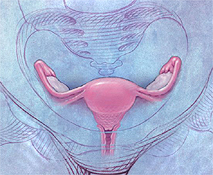
Issue 16: 31 Jul 2006
Source:
Journal of Paediatric and Adolescent Gynecology 2006; 19: 285-9
A new study has yielded insights into moderate to severe dysmenorrhea in
adolescent girls, providing information on the associated morbidity and how
it is treated.
Researchers from Columbia University Medical Center, in New York, USA,
identified and interviewed 76 healthy adolescents with moderate to severe
primary dysmenorrhea, as part of the enrollment process for a trial of oral
contraceptives. Girls already taking hormonal contraception were excluded.
The girls were aged 19 years or younger, and had a mean age of 16.8 years.
The researchers’ main findings, reported in the latest issue of the Journal
of Paediatric and Adolescent Gynecology, include:
Dysmenorrhea was moderate in 42 percent, severe in 58 percent.
55 percent reported associated nausea, 24 percent reported associated
vomiting.
Of the 66 subjects attending school, 46 percent said they missed at least 1
day a month due to dysmenorrhea.
The subjects reported a median of 2 days of severe pain during each menses;
12 percent reported 4 or more days of severe pain.
Nearly all of the girls talked about the pain of dysmenorrhea with someone,
including their mother (84 percent), friend (67 percent), doctor (37
percent) or nurse (22 percent).
All reported use of at least one non-pharmacological intervention. These
were (most popular first): staying in bed or sleeping, taking a hot bath,
using a heating pad, watching television or some other distraction, taking a
special food or drink, and taking exercise.
93 percent used at least one medication to treat dysmenorrhea. 91 percent
used over-the-counter (OTC) medications, including ibuprofen, acetaminophen
(paracetamol), and naproxen. 21 percent used prescription medicines,
including ibuprofen and naproxen. Most of the girls in the study were using
“considerably less than the recommended dose of medication for dysmenorrhea
or pain,” the researchers found.
Implications for education
The researchers conclude: “This study indicates that greater education is
needed for adolescents with dysmenorrhea, and their parents. There is a
demonstrated need by adolescents for information regarding not only
effective medications, emphasizing NSAID use, but also appropriate dosing,
including prophylactic administration and dosing frequency.”
They add that further research should address the extent to which healthcare
professionals caring for adolescent girls offer appropriate treatment,
including prescription doses of effective medication.
Low-risk cesareans carry increased neonatal mortality risk
Source: Birth 2006; Not yet available online
Examining infant and neonatal mortality among women with no indication of
medical risks or complications who undergo a primary cesarean delivery.
Low-risk mothers who opt for a cesarean face a higher risk of infant and
neonatal mortality than those who deliver vaginally, researchers report.
"These findings should be of concern for clinicians and policy makers who
are observing the rapid growth in the number of primary cesareans to mothers
without a medical indication," said Marian McDorman, who led the study.
The team, from the Centers for Disease Control and Prevention in Atlanta,
Georgia, analyzed data on more than 5.7 million live births and 12,000
infant deaths over a 4-year period. The researchers focused on women with a
singleton full-term gestation and no indicated medical risks or
complications.
They found that, overall, infants born to these low-risk women had a low
incidence of neonatal death, at about one in 1000 live births. However,
further analysis showed that those delivered by cesarean section had twice
the risk of death as those delivered vaginally.
This is worrying because the overall rate of cesarean delivery rose by 41
percent between 1996 and 2004 in the USA, while the incidence in women with
no indication for cesarean almost doubled.
Diabetes and pregnancy outcomes
Issue 14: 3 Jul 2006)
Source: British Medical Journal 2006 (available online, doi:
10.1136/bmj.38856.692986.AE, published 16 June 2006)
Perinatal mortality and the prevalence of congenital anomalies are higher
than average in the babies of women with type 1 or type 2 diabetes, compared
with the general maternity population, according to new study findings.
Researchers from the UK’s Confidential Enquiry in to Maternal and Child
Health analyzed data from 231 maternity units in England, Wales, and
Northern Ireland, in one of the largest studies of pregnancy outcomes in
women with diabetes.
The data covered 2,359 pregnancies to women with type 1 or type 2 diabetes
who delivered in a 1-year period beginning on 1 March 2002. Of the 2,359
pregnancies, 1,707 of the women had type 1 diabetes and 652 had type 2
diabetes.
The women with type 2 diabetes were more likely than those with type 1
diabetes to come from a black, Asian or other ethnic minority group, and
from a deprived area.
Perinatal mortality
Perinatal mortality was similar in both groups: 31.7 per 1,000 total births
for women with type 1 diabetes, and 32.3 per 1,000 total births for women
with type 2 diabetes. The overall rate was 31.8 per 1,000, almost four times
higher than that of the general maternity population according to national
data from 2002.
Congenital anomalies
A total of 141 major congenital anomalies occurred in 109 offspring of the
women with diabetes, resulting in an overall prevalence of 46 per 1,000
total births (48 per 1,000 for women with type 1 diabetes, and 43 per 1,000
for women with type 2 diabetes). This is more than twice the rate of major
anomalies observed in the general maternity population.
Contributing to the higher rate of anomalies were high rates of neural tube
defects (4.2 times the general rate) and congenital heart disease (3.4 times
the general rate).
Both are high-risk groups
Noting that most previous research on this subject had focused on women with
type 1 diabetes, the researchers conclude that perinatal mortality and the
prevalence of congenital anomalies “do not seem to differ between the two
types of diabetes.”
Women with either type should be considered a high-risk group during
pregnancy, the researchers suggest. They add: “As the incidence of diagnosed
diabetes continues to increase, especially at young ages, the number of
women with diabetes in pregnancy will also continue to increase.”
Chromosomal abnormalities and reproductive failure

Issue 15: 17 Jul 2006
Source: European Journal of Obstetrics & Gynecology and Reproductive Biology
2006; 127: 106-9
A study has identified major chromosomal abnormalities in about 1 in 20
couples experiencing repeated spontaneous abortions in recognized
pregnancies. Minor abnormalities were found in about 1 in 6 couples.
Specialists at Karadeniz Technical University in Trabzon, Turkey, studied
cytogenetic data from 645 couples (1290 patients) treated at the center who
had experienced repeated spontaneous abortion. This was defined as either
having had at least two first-trimester spontaneous abortions or having had
one first-trimester spontaneous abortion and a second- or third-trimester
fetal death and/or malformed child.
The researchers present their results in a new paper in the European Journal
of Obstetrics & Gynecology and Reproductive Biology. They identified major
chromosomal abnormalities in 25 couples (3.86 percent). Abnormalities
classified as major included reciprocal and robertsonian translocations,
inversions, deletions, sex chromosome aneuploidies, and mosaicism of either
numerical or structural abnormalities.
Most of the major abnormalities identified were structural (3.71 percent),
and only a few were numerical (0.15 percent).
In addition, the researchers identified relevant polymorphisms in 115
couples (17.51 percent).
Investigation “important and necessary”
Discussing their findings, the researchers say the prevalence of major
chromosomal abnormalities seen in the study (3.86 percent) is in agreement
with published literature (various rates up to 13.1 percent).
They discuss in detail the implications of the identified abnormalities, and
say the data “confirm that chromosomal studies in couples with reproductive
failure are an important and necessary part of the etiological
investigations.” Chromosomal studies should be performed in all couples with
reproductive failure and/or fetal death, the researchers write.
They emphasize that the results also provide further evidence that there are
non-cytogenetic factors associated with recurrent miscarriage.
The ABC of laparoscopic entry

Issue 14: 3 Jul 2006
Source: Journal of Minimally Invasive Gynecology 2006; 13: 249-51
A three-step “ABC” of laparoscopic entry that minimizes complications is
described in a new paper.
Past research has shown that at least 50 percent of laparoscopic
complications occur during the initial entry into the abdomen, regardless of
the method used.
In the latest issue of the Journal of Minimally Invasive Gynecology, Dr
George Vilos from the department of obstetrics and gynecology at the
University of Western Ontario, in London, Canada, shares the techniques he
uses to prevent complications during closed entry (the type of entry used by
most gynecologists worldwide, according to published research).
Three steps
The ABC of laparoscopic entry put forward by the author is as follows:
A = Low initial Veres intraperitoneal pressure (LIVIP-pressure).
B = High-pressure pneumoperitoneum entry (HIP-pneumo entry).
C = Visual entry with the Ternamian cannula.
Each of these is described in detail in the full paper.
The author reports that he has been practicing LIVIP-pressure and HIP-pneumo
entry since 1997, and adopted visual entry with the Ternamian cannula in
2000.
Before 1997, he writes, he experienced 10 injuries during laparoscopic
access in 3,472 consecutive laparoscopies. These were three small-bowel
punctures with the Veres needle, three small-bowel injuries with the primary
trocar, two large-bowel injuries with the primary trocar, and two
primary-trocar injuries to large bowel and major vessels.
Since 1997 there have been three complications in more than 3,000
consecutive laparoscopies: two large-bowel Veres needle punctures, requiring
no treatment, and one transverse colon puncture with the primary trocar. No
vascular injuries have occurred.
May 2007
|
June 2007
|
Early initiation of feeding was associated with reduced time to return of bowel sounds, reduced postoperative hospital stay and with suggestion of reduced abdominal distention. There is no evidence to justify a policy of restricting oral fluids or food after uncomplicated caesarean section
|
Sexual intercourse for cervical ripening and induction of labour
Cochrane Database of Systematic
Reviews 2007 Issue 1
Copyright © 2007 The Cochrane Collaboration. Published by John Wiley
& Sons, Ltd.
DOI: 10.1002/14651858.CD003093 This version first published
online: 23 April 2001 in Issue 2, 2001
Date of Most Recent Substantive Amendment: 15 February 2001
This record should be cited as: Kavanagh J, Kelly AJ, Thomas J.
Sexual intercourse for cervical ripening and induction of labour.
Cochrane Database of Systematic Reviews 2001, Issue 2. Art. No.:
CD003093. DOI: 10.1002/14651858.CD003093.
Abstract
Background
The role of prostaglandins for cervical
ripening and induction of labour has been examined extensively. Human semen
is the biological source that is presumed to contain the highest
prostaglandin concentration. The role of sexual intercourse in the
initiation of labour is uncertain. The action of sexual intercourse in
stimulating labour is unclear, it may in part be due to the physical
stimulation of the lower uterine segment, or endogenous release of oxytocin
as a result of orgasm or from the direct action of prostaglandins in semen.
Furthermore nipple stimulation may be part of the process of initiation.
This is one of a series of reviews of methods of cervical ripening and
labour induction using standardised methodology.
Objectives
To determine the effects of sexual intercourse for third trimester cervical ripening or induction of labour in comparison with other methods of induction.
Search strategy
The Cochrane Pregnancy and Childbirth Group trials register (March 2004) and bibliographies of relevant papers.
Selection criteria
Clinical trials comparing sexual intercourse for third trimester cervical ripening or labour induction with placebo/no treatment or other methods listed above it on a predefined list of labour induction methods.
Data collection and analysis
A strategy was developed to deal with the large volume and complexity of trial data relating to labour induction. This involved a two-stage method of data extraction.
Main results
There was one included study of 28 women which reported very limited data, from which no meaningful conclusions can be drawn.
Authors' conclusions
The role of sexual intercourse as a method of induction of labour is uncertain. Any future trials investigating sexual intercourse as a method of induction need to be of sufficient power to detect clinically relevant differences in standard outcomes. However, it may prove difficult to standardise sexual intercourse as an intervention to allow meaningful comparisons with other methods of induction of labour.
Plain
language summary
The role of sexual intercourse as a method for induction of labour is
uncertain
Human sperm contains a high amount of prostaglandin, a hormone-like
substance which ripens the cervix and helps labour to start. Sometimes
it is necessary to help start labour and it has been suggested that
sexual intercourse may be an effective means. However, there is not
enough evidence to show whether sexual intercourse is effective or to
show how it compares with other methods. More research is needed.
Maternal glucose administration for
facilitating tests of fetal wellbeing
Cochrane Database of Systematic
Reviews 2007 Issue 1
Copyright © 2007 The Cochrane Collaboration. Published by John Wiley
& Sons, Ltd.
DOI: 10.1002/14651858.CD003397 This version first published
online: 23 October 2001 in Issue 4, 2001
Date of Most Recent Substantive Amendment: 26 August 2001
This record should be cited as: Tan KH, Sabapathy A. Maternal
glucose administration for facilitating tests of fetal wellbeing.
Cochrane Database of Systematic Reviews 2001, Issue 4. Art. No.:
CD003397. DOI: 10.1002/14651858.CD003397.
Abstract
Background
Antenatal maternal glucose administration has been suggested to improve the efficiency of antepartum fetal heart rate testing.
Objectives
The objective of this review was to assess the merits or adverse effects of antenatal maternal glucose administration in conjunction with tests of fetal wellbeing.
Search strategy
We searched the Cochrane Pregnancy and Childbirth Group's Trials Register (June 2006).
Selection criteria
All published and unpublished randomized controlled trials assessing the merits of antenatal maternal (oral or intravenous) glucose administration in conjunction with tests of fetal wellbeing.
Data collection and analysis
Both reviewers independently extracted data and assessed trial quality. Authors of published and unpublished trials were contacted for further information.
Main results
A total of two trials with a total of 708 participants were included. Antenatal maternal glucose administration did not decrease the incidence of non-reactive antenatal cardiotocography tests.
Authors' conclusions
Antenatal maternal glucose administration has not been shown to reduce non-reactive cardiotocography. More trials are needed to further substantiate this and to determine not only the optimum dose, but also to evaluate the efficacy, predictive reliability, safety and perinatal outcome of glucose administration in conjunction with cardiotocography and also other tests of fetal wellbeing.
Plain
language summary
There is no evidence that antenatal maternal glucose administration make
tests of fetal wellbeing more effective
Tests on unborn babies such as ultrasound and heart rate testing are
carried out to check their wellbeing. As a baby's sleep periods can
alter those results, various methods are used to wake the baby.
Antenatal maternal glucose administration is one of the methods. The
review of trials did not find this method to be effective. Research on
antenatal maternal glucose administration should take into consideration
that there have not been any benefits demonstrated as yet.
Maternal hydration for increasing amniotic fluid volume in oligohydramnios and normal amniotic fluid volume
Cochrane Database of Systematic
Reviews 2007 Issue 1
Copyright © 2007 The Cochrane Collaboration. Published by John
Wiley & Sons, Ltd.
DOI: 10.1002/14651858.CD000134 This version first published
online: 21 January 2002 in Issue 1, 2002
Date of Most Recent Substantive Amendment: 1 September 2001
This record should be cited as: Hofmeyr GJ, Gülmezoglu AM.
Maternal hydration for increasing amniotic fluid volume in
oligohydramnios and normal amniotic fluid volume. Cochrane
Database of Systematic Reviews 2002, Issue 1. Art. No.:
CD000134. DOI: 10.1002/14651858.CD000134.
Abstract
Background
Oligohydramnios (reduced amniotic fluid) may be responsible for malpresentation problems, umbilical cord compression, concentration of meconium in the liquor, and difficult or failed external cephalic version. Simple maternal hydration has been suggested as a way of increasing amniotic fluid volume in order to reduce some of these problems.
Objectives
The objective of this review was to assess the effects of maternal hydration on amniotic fluid volume and measures of pregnancy outcome.
Search strategy
The Cochrane Pregnancy and Childbirth Group trials register (27 January 2004) and the Cochrane Controlled Trials Register (The Cochrane Library, Issue 4, 2003).
Selection criteria
Randomised trials comparing maternal hydration with no hydration in pregnant women with reduced or normal amniotic fluid volume.
Data collection and analysis
Eligibility and trial quality were assessed by both reviewers.
Main results
Two studies of 78 women were included. The women were asked to drink two litres of water before having a repeat ultrasound examination. Maternal hydration in women with and without oligohydramnios was associated with an increase in amniotic volume (weighted mean difference for women with oligohydramnios 2.01, 95% confidence interval 1.43 to 2.60; and weighted mean difference for women with normal amniotic fluid volume 4.5, 95% confidence interval 2.92 to 6.08). Intravenous hypotonic hydration in women with oligohydramnios was associated with an increase in amniotic fluid volume (weighted mean difference 2.3, 95% confidence interval 1.36 to 3.24). Isotonic intravenous hydration had no measurable effect. No clinically important outcomes were assessed in any of the trials.
Authors' conclusions
Simple maternal hydration appears to increase amniotic fluid volume and may be beneficial in the management of oligohydramnios and prevention of oligohydramnios during labour or prior to external cephalic version. Controlled trials are needed to assess the clinical benefits and possible risks of maternal hydration for specific clinical purposes.
Plain
language summary
Pregnant women with too little fluid surrounding their babies can
increase this by consuming liquid, although it is not known whether
this improves outcomes
Oligohydramnios is where there is too little fluid surrounding the
baby in the womb (uterus). This may occur because the baby is not
thriving properly. It may cause the baby to be unable to turn into
the head down position for the birth, or compression of the baby's
umbilical cord. The review of trials found that women who drank
extra water (usually two litres over two hours) or had fluid dripped
directly into their bloodstream (both forms of maternal hydration)
increased the volume of the fluid surrounding the baby. However, it
is not clear whether this is better for the baby or not. More
research is needed.
Immersion in water in pregnancy, labour and birth
Cochrane Database of Systematic
Reviews 2007 Issue 1
Copyright © 2007 The Cochrane Collaboration. Published by John
Wiley & Sons, Ltd.
DOI: 10.1002/14651858.CD000111.pub2 This version first
published online: 22 April 2002 in Issue 2, 2002
Date of Most Recent Substantive Amendment: 1 January 2002
This record should be cited as: Cluett E R, Nikodem VC,
McCandlish RE, Burns EE. Immersion in water in pregnancy, labour
and birth. Cochrane Database of Systematic Reviews 2002,
Issue 2. Art. No.: CD000111. DOI:
10.1002/14651858.CD000111.pub2.
Abstract
Background
Enthusiasts for immersion in water during labour, and birth have advocated its use to increase maternal relaxation, reduce analgesia requirements and promote a midwifery model of supportive care. Sceptics are concerned that there may be greater harm to women and/or babies, for example, a perceived risk associated with neonatal inhalation of water and maternal/neonatal infection.
Objectives
To assess the evidence from randomised controlled trials about the effects of immersion in water during pregnancy, labour, or birth on maternal, fetal, neonatal and caregiver outcomes.
Search strategy
We searched the Cochrane Pregnancy and Childbirth Group trials register (September 2003).
Selection criteria
All randomised controlled trials comparing any kind of bath tub/pool with no immersion during pregnancy, labour or birth.
Data collection and analysis
We assessed trial eligibility and quality and extracted data independently. One reviewer entered the data and another checked them for accuracy.
Main results
Eight trials are included (2939 women). No trials were identified that evaluated immersion versus no immersion during pregnancy, considered different types of baths/pools, or considered the management of third stage of labour. There was a statistically significant reduction in the use of epidural/spinal/paracervical analgesia/anaesthesia amongst women allocated to water immersion water during the first stage of labour compared to those not allocated to water immersion (odds ratio (OR) 0.84, 95% confidence interval (CI) 0.71 to 0.99, four trials). There was no significant difference in vaginal operative deliveries (OR 0.83, 95% CI 0.66 to 1.05, six trials), or caesarean sections (OR 1.33, 95% CI 0.92 to 1.91). Women who used water immersion during the first stage of labour reported statistically significantly less pain than those not labouring in water (40/59 versus 55/61) (OR 0.23, 95% CI 0.08 to 0.63, one trial). There were no significant differences in incidence of an Apgar score less than 7 at five minutes (OR 1.59, 95% CI 0.63 to 4.01), neonatal unit admissions (OR 1.05, 95% CI 0.68 to 1.61), or neonatal infection rates (OR 2.01, 95% CI 0.50 to 8.07).
Authors' conclusions
There is evidence that water immersion during the first stage of labour reduces the use of analgesia and reported maternal pain, without adverse outcomes on labour duration, operative delivery or neonatal outcomes. The effects of immersion in water during pregnancy or in the third stage are unclear. One trial explores birth in water, but is too small to determine the outcomes for women or neonates.
Plain
language summary
Immersion in water during the first stage of labour significantly
reduces women's perception of pain and use of epidural/spinal
analgesia
Water immersion during the first stage of labour significantly
reduces epidural/spinal analgesia requirements and reported maternal
pain, without adversely affecting labour duration, operative
delivery rates, or neonatal wellbeing. Immersion in water during the
second stage of labour increased women's reported satisfaction with
pushing. Further research is needed to assess the effect of
immersion in water on neonatal and maternal morbidity. No trials
could be located that assessed the immersion of women in water
during pregnancy or the third stage of labour.
Labour assessment programs to delay admission to labour wards
Cochrane Database of Systematic
Reviews 2007 Issue 1 (Status: Commented)
Copyright © 2007 The Cochrane Collaboration. Published by John
Wiley & Sons, Ltd.
DOI: 10.1002/14651858.CD000936 This version first published
online: 23 July 2001 in Issue 3, 2001
Date of Most Recent Substantive Amendment: 1 March 2001
This record should be cited as: Lauzon L, Hodnett E. Labour
assessment programs to delay admission to labour wards.
Cochrane Database of Systematic Reviews 2001, Issue 3. Art.
No.: CD000936. DOI: 10.1002/14651858.CD000936.
Abstract
Background
The aim of labour assessment programs is to delay hospital admission until labour is in the active phase, and thereby to prevent unnecessary interventions in women who are not in established labour.
Objectives
The objective of this review was to assess the effects of labour assessment programs that aim to delay hospital admission until labour is in the active phase.
Search strategy
We searched the Cochrane Pregnancy and Childbirth Group trials register (January 2004).
Selection criteria
Randomised trials which compare labour assessment programs with direct admission to labour wards.
Data collection and analysis
Trial quality was assessed.
Main results
One study of 209 women was included. The trial was of excellent quality. Women who were randomised to the labour assessment unit spent less time in the labour ward (weighted mean difference -5.20 hours, 95% confidence interval -7.06, -3.34), were less likely to receive intrapartum oxytocics (odds ratio 0.45, 95% confidence interval 0.25 to 0.80) and analgesia (odds ratio 0.36, 95% confidence interval 0.16 to 0.78), than women who were admitted directly to the labour ward. Women in the labour assessment group reported higher levels of control during labour (weighted mean difference 16.00, 95% confidence interval 7.52 to 24.48). There is insufficient evidence to assess effects on rate of caesarean section and other important measures of maternal and neonatal outcome.
Authors' conclusions
Labour assessment programs, which aim to delay hospital admission until active labour, may benefit women with term pregnancies.
Plain
language summary
Pregnant women coming into hospital with signs of labour, may
benefit from formal assessment by a specialised program
Hospital labour assessment programs are specialised programs that
confirm whether women coming into hospital with signs of labour, are
in active labour (with the neck of the womb opening), before going
to labour ward. Women with full term pregnancies in these programs
spend time in the assessment unit, walk in the grounds, go home or
are admitted to labour ward. The review found they have shorter
labour ward stays, feel more control and use fewer drugs to progress
labour or for pain relief. There is not enough evidence on other
effects on the mother or baby or on unplanned out-of-hospital birth.
Enemas during labour
Cochrane Database of Systematic
Reviews 2007 Issue 1
Copyright © 2007 The Cochrane Collaboration. Published by John Wiley
& Sons, Ltd.
DOI: 10.1002/14651858.CD000330 This version first published
online: 25 October 1999 in Issue 4, 1999
Date of Most Recent Substantive Amendment: 1 July 1999
This record should be cited as: Cuervo LG, Rodríguez MN, Delgado MB.
Enemas during labour. Cochrane Database of Systematic Reviews
1999, Issue 4. Art. No.: CD000330. DOI: 10.1002/14651858.CD000330.
Abstract
Background
The use of enemas during labor usually depends on the preference of the attending physician and available resources. However enemas cause discomfort in women and increase the costs of delivery.
Objectives
The objective of this review was to assess the effects of enemas during the first stage of labor on infection rates in mothers and newborns, duration of labor, perineal wound dehiscence in the mother, perineal pain, faecal soiling and costs.
Search strategy
We searched the Cochrane Pregnancy and Childbirth Group trials register, the Cochrane Controlled Trials Register, Database of Abstracts of Reviews of Effectiveness, Medline and reference lists of articles.
Selection criteria
Randomised trials in which an enema was administered during the first stage of labor and which included assessment of possible neonatal or puerperal morbidity or mortality.
Data collection and analysis
Selected studies were assessed by three reviewers independently.
Main results
Two trials involving 665 women were included. These showed no clear difference in infection rates for puerperal mothers (odds ratio 0.61, 95% confidence interval 0.36 to 1.04) or newborn children.
Authors' conclusions
There is not enough evidence to evaluate the use of routine enemas during the first stage of labor.
Home versus hospital birth
Cochrane Database of Systematic
Reviews 2007 Issue 1
Copyright © 2007 The Cochrane Collaboration. Published by John Wiley
& Sons, Ltd.
DOI: 10.1002/14651858.CD000352 This version first published
online: 27 July 1998 in Issue 3, 1998
Date of Most Recent Substantive Amendment: 20 April 1998
This record should be cited as: Olsen O, Jewell MD. Home versus
hospital birth. Cochrane Database of Systematic Reviews 1998,
Issue 3. Art. No.: CD000352. DOI: 10.1002/14651858.CD000352.
Abstract
Background
A meta-analysis of observational studies have suggested that planned home birth may be safe and with less interventions than planned hospital birth.
Objectives
The objective of this review was to assess the effects of planned home birth compared to hospital birth on the rates of interventions, complications and morbidity as determined in randomized trials.
Search strategy
We searched the Cochrane Pregnancy and Childbirth Group's Trials Register (April 2006).
Selection criteria
Controlled trials comparing planned hospital birth to planned home birth in selected women, assisted by an experienced home birth practitioner, and backed up by a modern hospital system in case transfer should be necessary.
Data collection and analysis
Trial quality was assessed and data were extracted by one review author and checked by the other author. Study authors were contacted for additional information.
Main results
One study involving 11 women was included. The trial was of reasonable quality, but was too small to be able to draw conclusions.
Authors' conclusions
There is no strong evidence to favour either planned hospital birth or planned home birth for low-risk pregnant women.
Plain
language summary
No strong evidence about the benefits and safety of planned home birth
compared to planned hospital birth for low-risk pregnant women
In some countries almost all births happen in hospital, whereas in other
countries home birth is considered the first choice for healthy and
otherwise low-risk women. The change to planned hospital birth for
low-risk pregnant women in many countries during this century was not
supported by good evidence. Planned hospital birth may even increase
unnecessary interventions and complications without any benefit for
low-risk women. The review found only one small trial, which provided no
strong evidence to favour either planned hospital birth or planned home
birth for low-risk pregnant women.
Breast stimulation for cervical ripening and induction of labour
Cochrane Database of Systematic
Reviews 2007 Issue 1
Copyright © 2007 The Cochrane Collaboration. Published by John Wiley
& Sons, Ltd.
DOI: 10.1002/14651858.CD003392.pub2 This version first published
online: 20 July 2005 in Issue 3, 2005
Date of Most Recent Substantive Amendment: 10 March 2005
This record should be cited as: Kavanagh J, Kelly AJ, Thomas J.
Breast stimulation for cervical ripening and induction of labour.
Cochrane Database of Systematic Reviews 2005, Issue 3. Art. No.:
CD003392. DOI: 10.1002/14651858.CD003392.pub2.
Abstract
Background
Breast stimulation has been suggested as a means of inducing labour. It is a non-medical intervention allowing women greater control over the induction process. This is one of a series of reviews of methods of cervical ripening and labour induction using a standardised methodology.
Objectives
To determine the effectiveness of breast stimulation for third trimester cervical ripening or induction of labour in comparison with placebo/no intervention or other methods of induction of labour.
Search strategy
The Cochrane Pregnancy and Childbirth Group Trials Register (March 2004) and bibliographies of relevant papers.
Selection criteria
Clinical trials of breast stimulation for third trimester cervical ripening or labour induction.
Data collection and analysis
A strategy was developed to deal with the large volume and complexity of trial data relating to labour induction. This involved a two-stage method of data extraction.
Main results
Six trials (719 women) were included.
Analysis of trials comparing breast stimulation with no intervention found a
significant reduction in the number of women not in labour at 72 hours
(62.7% versus 93.6%, relative risk (RR) 0.67, 95% confidence interval (CI)
0.60 to 0.74). This result was not significant in women with an unfavourable
cervix. A major reduction in the rate of postpartum haemorrhage was reported
(0.7% versus 6%, RR 0.16, 95% CI 0.03 to 0.87). No significant difference
was detected in the caesarean section rate (9% versus 10%, RR 0.90, 95% CI
0.38 to 2.12) or rates of meconium staining. There were no instances of
uterine hyperstimulation. Three perinatal deaths were reported (1.8% versus
0%, RR 8.17, 95% CI 0.45 to 147.77).
When comparing breast stimulation with oxytocin alone the analysis found no
difference in caesarean section rates (28% versus 47%, RR 0.60, 95% CI 0.31
to 1.18). No difference was detected in the number of women not in labour
after 72 hours (58.8% versus 25%, RR 2.35, 95% CI 1.00 to 5.54) or rates of
meconium staining. There were four perinatal deaths (17.6% versus 5%, RR
3.53, 95% CI 0.40 to 30.88).
Authors' conclusions
Breast stimulation appears beneficial in relation to the number of women not in labour after 72 hours, and reduced postpartum haemorrhage rates. Until safety issues have been fully evaluated it should not be used in high-risk women. Further research is required to evaluate its safety, and should seek data on postpartum haemorrhage rates, number of women not in labour at 72 hours and maternal satisfaction.
Plain
language summary
Breast stimulation appears beneficial in relation to the number of women
not in labour after 72 hours, and reduced postpartum haemorrhage rates
Breast stimulation causes the womb to contract, though the mechanism
remains unclear. It may increase levels of the hormone oxytocin, which
stimulates contractions. It is a non-medical method allowing the woman
greater control over the process of attempting to induce labour. The
review found insufficient research to evaluate the safety of breast
stimulation in a high-risk population and until safety issues have been
fully evaluated, it should not be considered for use in this group.
July 2007
circumcised men have about half the risk of uncircumcised men when it
comes to acquiring HIV through vaginal intercourse
It appears that circumcised men have about half the risk of
uncircumcised men when it comes to acquiring HIV through vaginal
intercourse. Two trials in Kenya and Uganda were halted when interim
reports showed greater than 50% reduction in risk (Rohr BMJ
2007;334:11). The Langerhans cells of the foreskin are particularly
vulnerable to HIV penetration which is thought to explain the protection
offered by their removal.
These findings will probably persuade health authorities to make
circumcision more widely available in countries with high HIV prevalence
rates.
Maternal
exercise and fetal growth
In developed countries (and only Egypt from the developing world),
more women are overweight or obese than ever before. When these women
conceive, how will their energy intake and expenditure affect their
fetus’ growth? There are already indications that overweight women who
do not exercise in pregnancy are delivering heavier babies with
resultant increased risks of longer labours, shoulder dystocia,
caesarean sections, as well as long-term implications for the child,
adolescent and adult.
In a detailed study of women’s exercise patterns in pregnancy, Perkins
et al from the US (Obstets Gynecol 2007;109:81-87) showed that in women
less than 165cm tall, the effect of physical activity on fetal growth
was minimal. In taller women, presumably free of “short–stature”
constraints, the amount of exercise they took did have a pronounced
effect on the babies’ weight, an effect of 600g between sedentary women
and those who participated in regular aerobic exercise such as walking
or jogging.
The authors believe that even vigorous physical activity has a positive
effect in keeping fetal growth within normal limits and reducing
intrapartum risks.
Nitroglycerin and preterm labour
Preterm delivery remains the greatest cause of neonatal mortality and
morbidity. The incidence is rising and means of treating it have been
unable to show significant benefit to the neonate, immediate or
long-term. However, a Canadian trial just published may change that
(Smith et al AJOG 2007;196:37-9).
Treating women who had regular painful contractions with nitroglycerin
between 24 and 32 weeks showed a delay in delivery of 11 days, compared
to placebo. This overall result was highly significant and the
treatment appeared most effective between 24 and 28 weeks. The
nitroglycerin was delivered by transdermal patch and all patients were
given steroids. Unsurprisingly, the delay resulted in measurably better
neonatal outcomes in mortality and less lung disease. The number needed
to treat was 10 to enjoy the overall improvements.
The trial was meticulous and the bottom line probably grossly
understated the case when the authors say that the use of nitroglycerin
“may result in a major cost saving and longer-term health benefits”.
Corticosteroids and preterm birth
---- Cochrane evidence based summary
• Steroids, such as 12mg of betamethasone intramuscularly, should be
given to the mother and repeated after 24 hours.
• This single course should be given where delivery is anticipated
between 24 and 34 weeks gestation.
• Multiple courses are contra-indicated on present knowledge.
• Included are women with ruptured membranes, preeclampsia, multiple
pregnancies and where delivery is likely in less than 24 hours.
• It reduces the risk of neonatal death, respiratory distress, cerebral
haemorrhage, necrotising enterocolitis and early neonatal systemic
infection.
• Statistically, 21 patients need to be treated to avoid one neonatal
death.
• Long-term follow-up is reassuring.
(Neilson Obstets Gynecol 2007;109:189-90)
Games for brains and folate for
function
Most colleagues sharing this letter have passed the age of 50. We
can not stop aging.
As we age, our brains function less well. This is especially true of
memory and the speed with which we process information. In severe forms
this manifests as dementia like Alzheimer’s but in most people there is
a less obvious cognitive decline and certain risk factors have been
identified, such as mental stagnation and poor folate status.
Maintaining mental agility by participating in stimulating pursuits such
as games and reading have proved to slow the decline process. As
populations age in developed countries like the US, the idea of
cognitive training for the elderly is attracting research. Willis et al
(JAMA 2006;296:2805-14) showed that training interventions for 10
sessions can have positive long-term benefits. Groups were instructed
about reasoning, memory and speed of information-handling, and 5 years
later they outscored controls in these domains.
Other potential primary preventative measures are exercise, HRT for
women, diet and supplements. It seems extra folic acid is indeed
helpful. Druga et al from The Netherlands (Lancet 2007;369:208-16)
showed that 800µg folate a day for three years was significantly better
than placebo in maintaining memory, sensimotor speed and information
processing.
The participants – men and women between 50 and 70 years – also had
concomitantly lowered homocysteine levels which are, in general,
associated with a lowered cardio-vascular disease risk. There is also
the suggestion that the extra folate may slow hearing loss in this
group. Those taking the active tablets had better hearing at lower
decibels but similar perception at higher frequencies (Druga et al Ann
Int Med 2007;146:1-9). This is primary prevention and may give impetus
to the Polypill saga.
The Polypill was first mooted by Wald et al (BMJ 2003;326:1419) as a
combination of a statin, aspirin, a blood pressure lowering agent and
folic acid. The theory is that the cocktail will act as primary
prophylaxis for cardio-vascular and cerebral disease, but there is
little hard evidence of effect. Now Reddy (NEJM 2007;356:3) suggests
that a generic version would be useful in developing countries and,
given the Indian propensity for drug industry innovation, the Polypill
may soon be revived.
Augest 2007
Intrauterine growth
Growth restriction has traditionally been a diagnosis made in the second half of pregnancy where the fetus appears not to be growing to its full potential.
This simplistic view has been challenged on two fronts in recent articles.
First, Bukowski et al (BMJ 2007;334:836-8) have shown that reduced growth patterns in the first trimester are linked to low birth-weight and early delivery. The factors responsible may, in turn, be linked to adult illnesses like heart disease and diabetes, traceable through catch-up growth in infancy and obesity in later life.
Secondly, Balchin et al (pp 833-5) showed that women from South Asian origins have shorter pregnancies than English women. It seems their pregnancies are programmed to end earlier than European women and, therefore “post-dates” problems arise sooner and induction to prevent these events may need to take place at 39 weeks rather than 41 weeks. Egyptian women may lie somewhere in between. Egyptian health service lacks proper and dependable statistics. We have to accept foreign statistics to apply to our people. Sadly.
We may need to tailor obstetric management more individually and those adjustments may come to include early pregnancy growth, race and even maternal statistics such as height and weight. Getting these factors right may be useful when looking at the adult health of those born using the obstetric recommendation of the early 21st century
Question 10: According to Dr. Oz, how often
should you have sex?
A) Once a week
B) Twice a week
C) 10 times a month
D) 200 times a year or more
The correct answer is D.

"If you have more than 200 orgasms a year, you can reduce your
physiologic age by six years," Dr. Oz says. He bases the number on a
study done at Duke University that surveyed people on the amount and
quality of sex they had. "They looked at what happened to folks that are
having a lot of intercourse over time, and the fact is, it correlated."
Among the benefits of having sex often, Dr. Oz says, is that it can
prove that your body is functioning as it is supposed to. "But in
addition, having sex with someone that you care for deeply is one of the
ways we achieve that Zen experience that we all crave as human beings,"
he says.
"It's really a spiritual event for folks when they're with someone they
love and they can consummate it with sexual activity … seems to offer
some survival benefit."
Sex Keeps You Young
As the old saying goes, "A little bit o' what you fancy does you good."
Apparently, according to some scientists, more than a little bit does
even better.
Couples who have sex at least three times a week look more than 10 years
younger than the average adult who makes love twice a week, says
consultant neuro-psychologist Dr David Weeks, who has made a 10-year
study of the subject.
"Pleasure derived from sex is a crucial factor in preserving youth. It
makes us happy and produces chemicals telling us so," he claims. "I
would say that famous people with youthful good looks, such as Goldie
Hawn, Helen Mirren and Joan Collins, all enjoy very active and healthy
sex lives."
Dr Weeks said loving couples make more of an effort to keep themselves
in good shape for their partners and will also benefit from the physical
and emotional effects of sexual intercourse. "There are physiological
factors too," said Dr Weeks. "Sex is the most intense kind of pleasure
and that triggers certain chemicals. In women it produces a human growth
hormone which helps the process."
Regular, loving sex came second to physical and mental activity as the
factors most important to retaining youth. The research discovered that
people can benefit from working and socialising with younger and older
people and from having younger partners.
The study also concluded that people who look younger are more
altruistic, confident and have more intellectual activity.
Dr Weeks warns it is loving intercourse with a regular partner, and not
promiscuous sexual activity, which gives the most benefit. "Casual sex
would bring a lot of the detrimental things to staying youthful such as
anxiety and the absence of security. Both those things are associated
with a loss of youth."
Dr Weeks, of the Royal Edinburgh Hospital, released the findings after
interviewing more than 3,500 people aged 18 to 102 in Britain, Europe
and the US.
He found that a person's genetic make-up was 25% responsible for
youthful looks, with behaviour accounting for 75%.
I am not sure whether it is the sexual act or the feeling of being loved
that the frequency of the act represents which is the cause of youthful
looks. I once knew a prominent Dominican monk in his eighties who looked
no more than the mid-fifties. He was, however, sure in the love of God.
BM
Just six weeks into
pregnancy find baby sex

Parents can find out the sex of their baby at just six
weeks by using a home test available on the Internet, it emerged
yesterday.
The £189 mail-order kit works by testing a single drop of a pregnant
woman's blood.
It produces the same information usually first given at 20 weeks by an
ultrasound scan.
Some parents will use the test to help them plan ahead but pro-life
campaigners warned last night that a result at six weeks could lead to a
sharp rise in the number of abortions.
Fetal sex testing is being offered commercially in Germany
during the first trimester. According to Tuffs (BMJ 2007;334:712) a
woman can get her doctor to send 2ml of blood to a laboratory which will
determine the fetus’s sex with 99% accuracy by searching the maternal
plasma for fetal DNA then looking for Y chromosome material.
Clinicians are concerned that the service which costs £100(EGP1100)
could be used to precipitate abortions if the sex of the fetus is not
that desired by the parents. Early sex determination has very limited
value in diagnosing inherited disorders. Making such tests available
outside of academic units sounds suspicious.
September 2007
Is coffee safe in
pregnancy?
There have been numerous observational studies linking coffee
consumption with adverse outcomes of pregnancy like low birth weight or
preterm delivery. The problem is that women who drink lots of coffee
tend to be a different group than those who drink 1 – 3 cups per day.
Caffeine is also found in tea, cola drinks and even chocolate, so
deciding on the evils or otherwise of coffee needed a randomised
controlled trial (Hey BMJ 2007;334:377-9).
Now a Danish group has conducted such a trial (Bech et al pp 409-12) and
their results are reassuring. Whether the women in the study drank
coffee with or without caffeine made no difference to gestational age or
birth weight. It seems 3 cups of caffeinated coffee per day in pregnancy
is perfectly safe.
Is fish safe in pregnancy?
Some long-chain omega-3 fatty acids are essential for optimal
neuro-development in the fetus. Fish is a rich source of these nutrients
but there have been suggestions that fish could contain toxins like
mercury that could be detrimental to brain function. Indeed, the current
US governmental recommendations advise not more than three servings of
seafood per week for pregnant women, but there may be a danger that such
restrictions could be counter-productive and can result in fetal brain
malnutrition.
This is quite an issue so the study by Hibbeln et al (Lancet
2007;369:578-85) is a welcome source of information. They investigated
12 000 children whose mothers had recorded how much seafood they
ingested during the index pregnancy and measured it against the child’s
intellectual, social, communication and fine-motor development up to 8
years of age. They found that the lower the seafood intake, the greater
the risk of dysfunction. Fish was protective of normal development and
function – exactly the opposite of the US advice. On balance, women are
not putting their unborn child at risk by eating three or more portions
of fish per week.
We need a similar study in the Nile delta where pollution is different.
As Myers & Davidson say in an editorial (Lancet 2007;369:537-8), the
dangers of fish-eating in pregnancy have been misrepresented and are
misleading and are not based on any evidence of harm